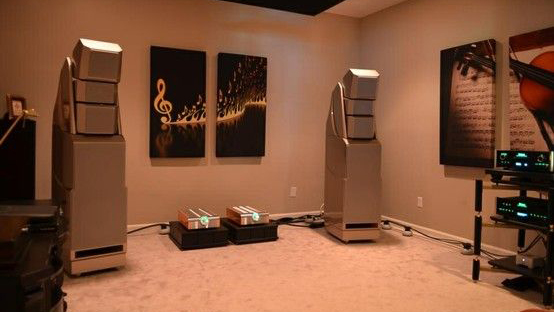
On 9th April 1988, 17-year-old Alan Shearer became the youngest footballer ever to score a hat-trick in the English top flight, knocking three past Arsenal during his first full start for Southampton. It was the beginning of a record goalscoring career and, first and foremost, a dream debut. Not every debut can be heralded as such an enormous success in the moment, but the beauty of hindsight certainly can cement them into the history books – as it has done with the products you’ll see below.
We previously picked out iconic hi-fi debuts in the loudspeaker, amplifier and turntable fields, and enjoyed the task so much that we challenged ourselves to curate a definitive 'Best Of' list across categories – the aforementioned three, plus CD players and DACs, to be more precise. And while we tried to curate a succinct list, after much deliberation we couldn’t get it down below 32 without compromising a good night’s sleep. (Trust us, we – especially the author of this piece – tried.)
For some of us, this exercise has been a nostalgic walk down memory lane, for others an excuse to learn more about our industry’s earliest successes and, in many cases, their lasting impact. So let’s dive in with decks first...
6 debut turntables
Thorens TD 124 (1956)
Founded 140 years ago by Hermann Thorens in Sainte-Croix Vaud, Switzerland, Thorens produced its first full turntable effort following years of design and engineering in the fields of gramophones, Edison-style phonograpsh, radio receivers and music cabinets (some of which featured built-in record players called ‘discophones’).
The TD124 was an instant runaway success and helped lead the German brand to become one of the most revered manufacturers of record players in the '50s and '60s, earning itself legendary status on the way. So legendary that this year, now-revived Thorens chose to commemorate its 140th birthday by releasing a special anniversary edition of the most recent version of the deck, the TD 124 DD.
Acoustic Research AR XA (1961)
The AR XA was designed by one of our greats, Acoustic Research founder Edgar Villchur, who, after inventing the acoustic suspension loudspeaker, the AR-1, in 1954, went about making as big of a splash in the record player market. The goal: to minimise the relative motion between the platter and tonearm and isolate them from external vibrations and acoustic feedback. Rather than those components and the motor being attached to the turntable’s top plate, as was customary at the time, the AR XA mounted the tonearm and platter to a sub-chassis beneath it, suspended at three points by springs at equal load points. Villchur liked to demonstrate its effectiveness by hitting the AR XA’s wooden base with a mallet while the record played on uninterrupted.
The deck also used a low-speed, low-powered motor. These solutions were, Acoustic Research admitted, based on ideas by telecoms manufacturer Stromberg-Carlson and others, but Acoustic Research presented it in a package that was immensely good value – so much so that the initial price of $58 had to be raised over subsequent years.
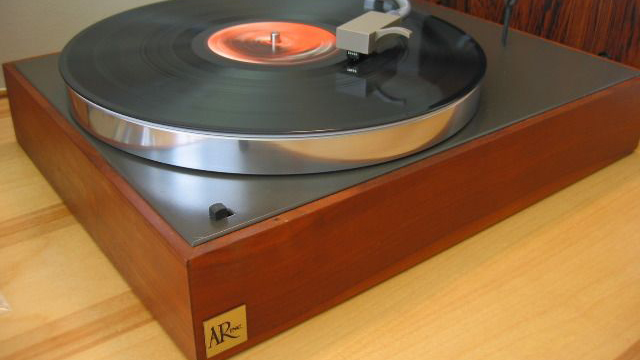
Technics SP10 (1970)
The direct-drive design was invented in 1969 by none other than the Technics brand – specifically, Shuichi Obata, an engineer at Matsushita (now Panasonic, who owns Technics), based in Osaka, and made its debut in the classic Technics SP-10 turntable. Unlike the idler wheel and belt designs that were around at the time, the platter sat on top of a drive motor that spun at 33 1/3 or 45 RPM – no belts, no wheels, just a hefty production cost. Oh, and a phenomenal sound. The SP-10 was an award-winning deck used by broadcasters around the world, including the BBC.
Anyone familiar with the Technics brand knows that the legendary SP-10 of course spurred generations of the design’s evolution, refining it to reduce vibrations and improve rotational stability and signal-to-noise ratio, the current culmination of which is the recently announced SL-1200GR2.
Rega Planet (1973)
When Rega owner Roy Gandy was working at Ford Motor Company, training to be an engineer, he was also making and selling speakers in his spare time. Customers would ask him for turntable recommendations to pair them with, but he wasn’t convinced by the quality of those available at the time and so decided to design his own – the Planet.
Gandy once told us that the Planet, with its three-spoke, steel and aluminium platter and Acos Lustre tonearm, ”sold because it looked different, rather than on sound quality”. He worked hard to reduce motor noise, and then, realising that the platter’s three metal discs didn't support the record well enough, ended up switching to a glass platter, which Rega still uses today.
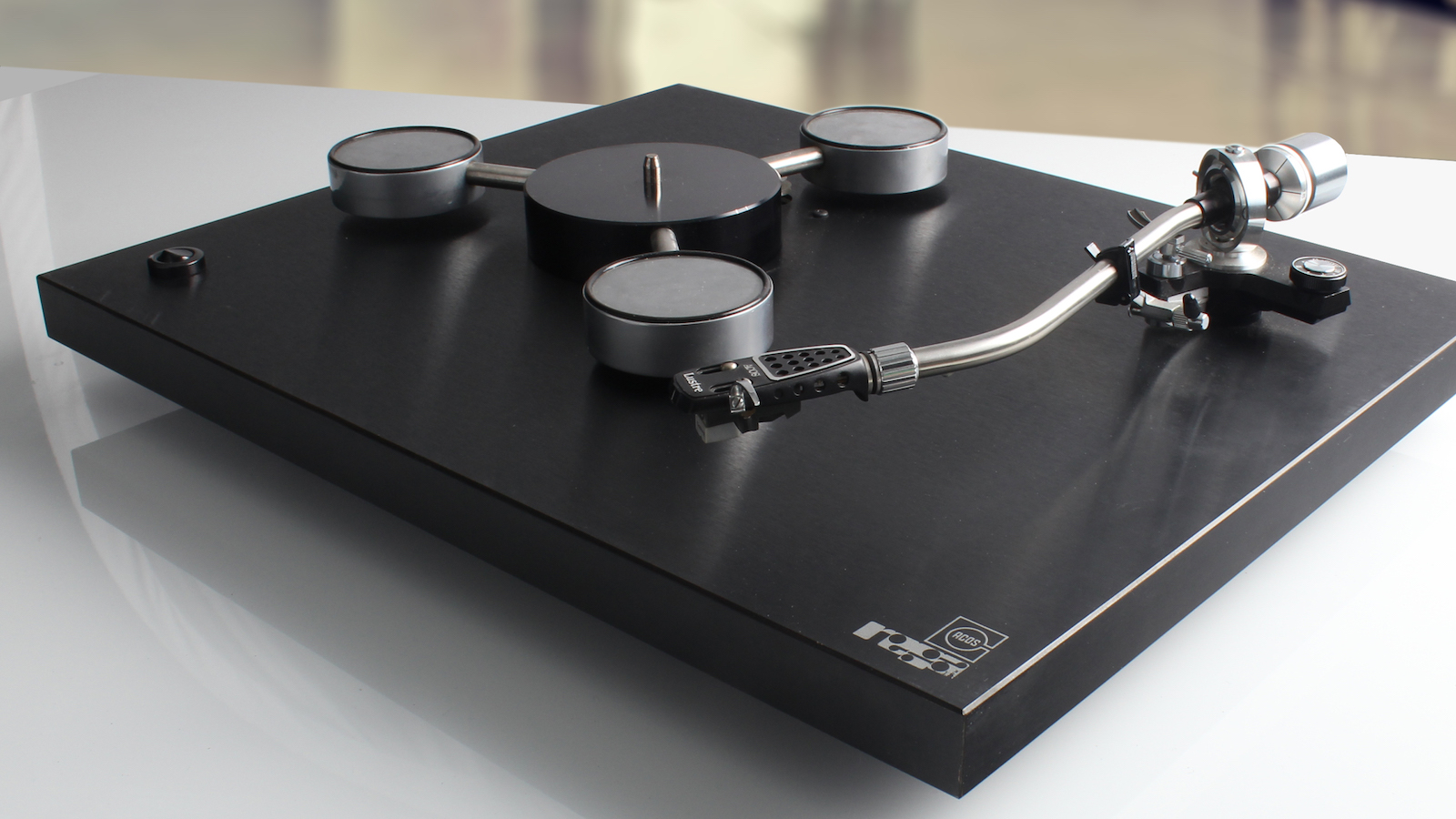
Linn LP12 (1973)
This initially unassuming belt-driven turntable may have had an initially slow rise to fame, but by the ‘80s it had become the dominant premium record player in the UK market, and today it’s considered the country’s most popular high-end deck of all time, not to mention one of the most capable ever made in any country. Its current form, while recognisable, has had as many changes over the original as Only Fools and Horses’ Trigger’s beloved road-sweeping broom with 17 new heads and 14 new handles – changes that have kept it at the forefront of turntable performance.
Pro-Ject 1 (1991)
The original Pro-Ject 1 laid the foundations for what has been a virtually unblemished record of success for not only the ongoing line but the Austrian company’s record player output on the whole. It was essentially a modified version of the Tesla NC-500, which was originally made as an affordable turntable for distribution across Central and Eastern Europe, and its success gave then-audio-shop-owner Heinz Lichtenegger the green light to buy the Tesla factory that was closing down, hire 50 staff and begin producing turntables under the Pro-Ject name. Fast forward to today and the brand is still there – as are some of the original Tesla machines.
“It was pretty ugly,” Lichtenegger told Stereo Life magazine, “but in terms of mechanics and sound it was really worth the price.” Indeed that second sentiment could describe any number of Pro-Ject turntables since.
- See our longer list of 13 debut decks from iconic turntable brands
- Want something current? These are the best turntables currently available
3 debut CD players
Sony CDP-101 (1982)
By Autumn 1982, the CD momentum had been building for a while, but it was on October 1st that Sony launched its first player, along with the first album available on the new format – Billy Joel's 52nd Street. While early versions of CD players Sony had demonstrated loaded the disc vertically, allowing people to see the action through a transparent front, the released CDP-101 sported the horizontal tray-loading style that of course went on to be the more popular one.
As we last year noted in a 40th-anniversary ode to the disc, Sony could relay all 16 bits of a CD’s audio signal, achieving this ‘by using a single-channel DAC which alternated between left and right channels. The player did not incorporate a hold-circuit which would have allowed a slight delay in the first-decoded channel so they could be output in sync. Some make much of this. But that particular criticism was simply silly. The delay of one channel compared to the other could be fixed just by moving the speaker carrying the delayed sound closer to you. How much closer? Well, the delay was precisely 11.3 microseconds. Which means 7.7 millimetres.’
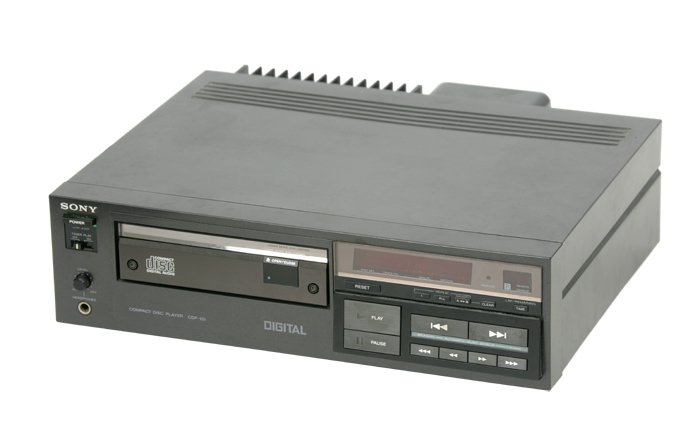
Philips CD100 (1982)
It’s hardly surprising that the two companies behind the compact disc format were the first to release CD players. While Sony’s CDP-101 had a front drawer disc tray and 16-bit DAC, Philips’ CD100 was a top-loader that only used a 14-bit DAC. So what about those last two bits of a CD’s audio signal? Well, that particular gap was bridged with a process called 'oversampling', where three extra samples of the signal were created and then fed into the DAC at four times the original rate, matching the resolution of 16-bit in the process. Clever.
Though that theoretically increased noise levels, the CD100 tended to be the critically better-rated performer, with a naturally smooth sonic character and first-rate error correction, and while many subsequent players adopted Sony’s 16-bit DAC approach, the first players by Meridian and Marantz in the mid-80s, the MCD and CD-63 respectively, followed the CD100’s oversampled 14-bit DAC cues.
Cambridge Audio CD1 (1986)
Cambridge Audio's first player cost a fortune when it launched in 1986 for £1500 (over £5000 / $6000 / AU$9000 in today's money), which was two to three times most others. But you couldn’t argue you weren’t getting your boxes’ worth. The CD1 comprised two – the upper one housed the disc tray and power supply while the bottom housed the DAC. Like the Philips, it too went down the oversampling 14-bit DAC method, though, keeping with the theme of quantity, incorporated three of them – two worked to nail speed and accuracy, the third took care of error correction.
Playback filters were yet another novelty of the CD1, which had nine options that covered the various pre-conversion filters that studios were using at the time in the absence of any standardisation for digitising analogue master tapes to CD.
4 debut DACs
Arcam Delta Black Box (1987)
A&R Cambridge had been going for almost 20 years before it decided to reinvent itself and change its name to Arcam, and the Delta Black Box DAC was one of the early and most instrumental products to define that transformation. It was the company’s first of its kind, and really one of very, very few of its kind around at the time – not surprising considering it was a DAC/processor designed to make domestic CD players (with S/PDIF outputs) sound better and arrived just a few years after such players began hitting the market. Sony and Marantz had outboard DACs for their higher-end players, but the Arcam was roughly three times more affordable, retailing at £249.
Co-founder John Dawson said that lots were sold as add-ons to mid-priced players, with sales figures of it and the closely related, Toslink optical input-toting Black Box 2 (1989) exceeding 10,000 units. Unsurprisingly, it also worked with the company’s own (Delta 70 CDP) CD player, which featured the same chipset, namely the 16-bit famous Philips TDA1641A. The Delta Black Box also took advantage of the Philips SAA7220 oversampling digital filter, complementing that architruee with penty of independent stabilised power supplies and good analogue circuitry.
Also key to the Black Box design was a custom, Arcam-branded integrated circuit, which was necessary to decode the S/PDIF data stream to I2S as no commercial part was available at the itme. Dawson notes that it was a 1000-gate array made by Newmarket Microsystems and cost roughly £10,000 to tool, with each chip costing £11, but that it was the first mover advantage the brand needed – no one else had one for at least a year.
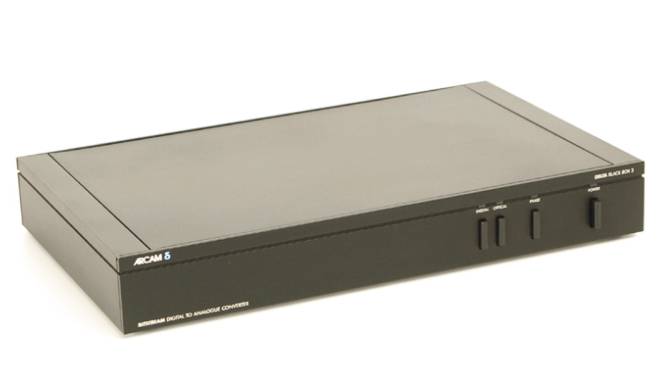
Wadia 2000 Decoding Computer (1988)
With the rise of the CD in the mid-80s, it was only a matter of time before more powerful processors and advanced number crunchers would be required to push digital audio down the evolutionary track. That was the thinking of a bunch of engineers from Minnesota who formerly worked at 3M Corporation and shared collective experience in digital telcomms R&D. In response to their dissatisfaction with the early CD players’ performance, they founded Wadia Digital and launched what was a seminal product in digital audio’s history – the Wadia 2000 Decoding Computer.
As described by Arnis Balgalvis for Stereophile shortly after the DAC’s release, the 2000 was “a sonic knockout… a development significant enough to reevaluate the status of the Compact Disc medium… for once we can be rid of the perennial qualifier: "It's good...for digital."” The result of years of R&D, it was the first decoder to resample at a 64x rate – much higher than anything else at the time – through the implementation of four AT&T DSP chips (which were replaced by Motorola ones some years later).
Wadia has many claims to fame, from producing the first outboard DAC and introducing glass fibre optics to home audio, to producing some of the most sophisticated CD players ever (like the 581ISE), but for its impact on the digital audio world at that time, the 2000 could well be considered its crowning achievement.
dCS 950 DAC (1993)
dCS’s journey began in 1987 when Oxford University graduate Mike Story and a team of engineers established themselves as an electronics consultancy to companies such as Ferranti, Marconi Avionics and British Aerospace, leading to collaborations with the Ministry of Defence and then, thanks to Story being somewhat of an audiophile, digital audio design.
The 900 ADC (analogue–to-digital converter) was the first fruit of that particular labour and the first to use the dCS Ring circuit technology that, evolutions on of course, still lies at the core of dCS designs today. The breakthrough 24-bit design was a hit with professional engineers, including Bob Ludwig, inspiring dCS to launch the 950, the world’s first 24-bit DAC, four years later. Another hit in the professional market and the inspiration to create the company’s first consumer DAC for home use, the Elgar.
Chord DAC64 (2002)
A good 13 years after Wadia’s first DAC turned up at the Consumer Electronics Show, so did Chord Electronics’. The DAC64 was the first offspring of many from the ongoing collaboration between Chord founder John Franks and audio engineer Rob Watts, and the first to use the FPGA (Field Programmable Gate Array) design which, covering everything from conversion to filtering, has been the beating heart of every Chord DAC since.
The DAC used 64-bit filter and DAC architecture (hence its name) and a crucial part of the design was the Watts Transient Aligned filter (WTA) filter, based on the theory that the timing of transients is better captured by high sample rates and the benefits are audibly discernible.
Speaking of the move to FPGA, Watts told What Hi-Fi?: “It was all about ultimate performance and pushing the boundaries of what was possible. I knew from the work that I had done (notably on the Deltec PDM1024 DAC) that there were serious problems within existing DACs and the only way of addressing these issues was by creating my own design using FPGA technology.” The rest, as they say, is history.
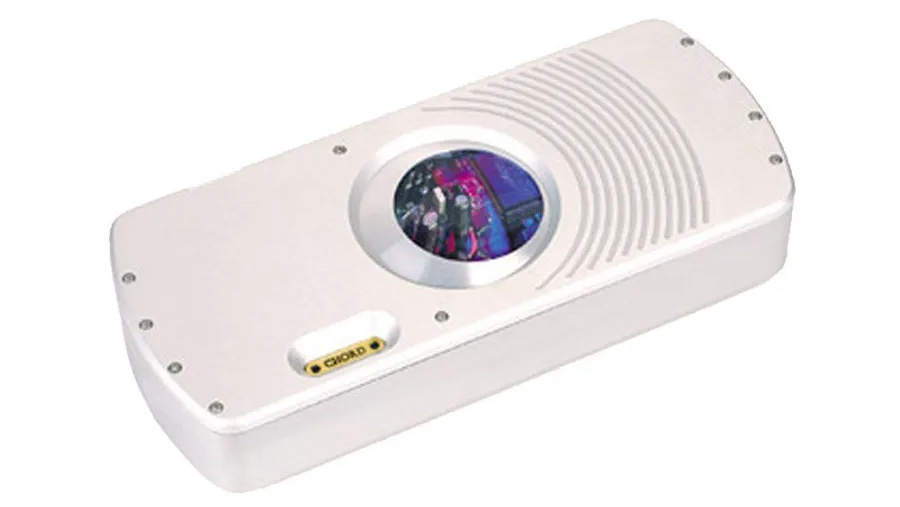
11 debut amplifiers
McIntosh 50W-1 (1949)
In 1946, Frank McIntosh, a design consultant for broadcast and TV stations, hired Gordon Gow to help him design a high-power, low-distortion amplifier for his clients – something he didn’t believe was already on the market. This amplifier would be – you guessed it – the 50W-1. The mono tube design utilised a pair of 6L6 output tubes and, pretty remarkably and as advertised (McIntosh apparently had a thing about many amps at the time not meeting their specifications), a frequency range of 20Hz to 20kHz at less than one per cent distortion. The 50W-1 was also notable for introducing the company’s first patented circuit, the Unity Coupled, which is still used in its full-size amplifiers and even its top-line valve headphone amp. It
Exactly twenty years later, McIntosh amplifiers would be used to power the ‘69 Woodstock music festival.
Cambridge Audio P40 (1968)
Cambridge Audio’s first-ever product was also the first amplifier in the world to use a toroidal transformer – a significant innovation at the time and, considering its ubiquity in amplifiers now, an important one. It just happened to be being manufactured by another local company at the time, and was implemented to help handle the heavy load necessary to produce heavier (rock) music. The P40 was designed by founders Professor Gordon Edge (after whom the 50th anniversary Edge series is named) and fellow engineer Peter Lee, with the slimline case designed by Roy Gray from Woudhuysen Design.
The P40 was an instant success but proved tricky to produce in large quantities and so the P50 was introduced a year later to address that, arriving with more power under the hood and a unique active volume control that was useful for matching a variety of input levels.
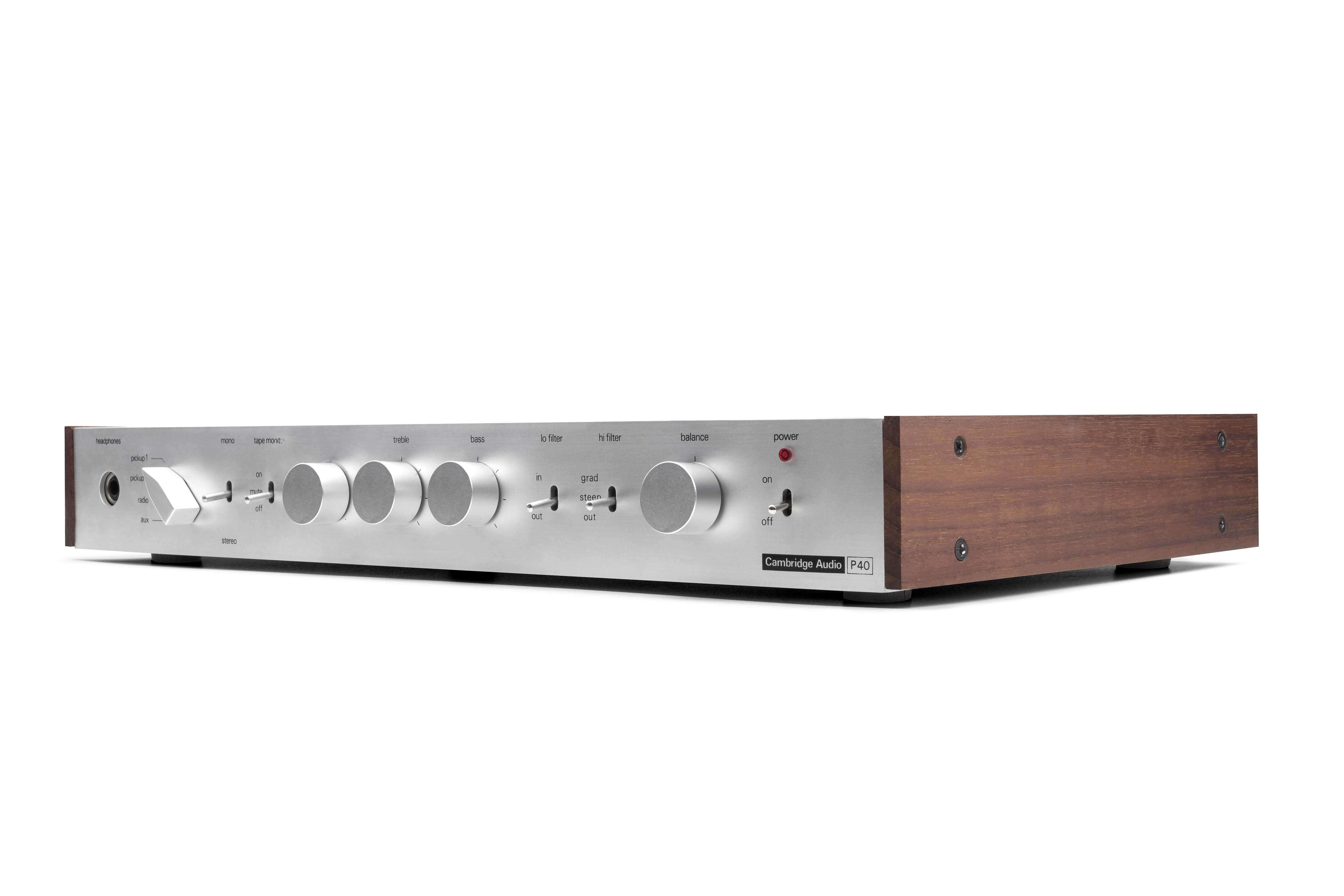
Audio Research SP-3 (1972)
While during the 70s the audio industry had all but moved from using vacuum tubes to transistors (due to their smaller size and lower power dissipation), a fella called Bill Johnson was certain there was life in the vacuum tube in the right hands – or indeed circuity. With 20 years of experience in audio (he had a store in Minneapolis and had designed custom amplifiers for customers), he founded Audio Research and launched the SP-3 preamplifier, which used six 12AX7s and two 12AX7 LN tubes. At the time, Harry Pearson of The Absolute Sound publication said: “I’d be willing to flatly pronounce this preamp the best.” And he wasn’t alone in extolling its virtues, not just in terms of its performance but also its robust build and classic looks.
Audio Research stuck with vacuum tubes (which went on to have a resurgence in the 80s, of course) and 10 years later would produce one of, in our opinion, the most legendary products of all time, the (15-valve) SP-10.
Naim NAP200 (1973)
In his early 20s, Julian Vereker, then a successful racing car driver and self-taught engineer (super-tuned Minis was his speciality), switched from building his own cars to building his own amplifiers and loudspeakers, primarily out of dissatisfaction with the way recordings he made of musician friends sounded. (A pretty a multi-talented guy, eh?) When the 70s rolled around, designs were in place and he won a contract to supply London’s Capital Radio station with audio equipment, the success of which led to Naim Audio being born.
Vereker and his co-founder Shirley Clarke were directors of their shop in Salisbury, UK (where the company’s products are still built five decades on) and their first consumer product for home use was the NAP 200 power amplifier, using a Vereker design from a couple of years previous. Anyone familiar with the revered British brand will know that the iconic NAP line is still going strong today, with this year’s NAP 250 model representing everything it has ever stood for: musical, rhythmic, dynamic sound.
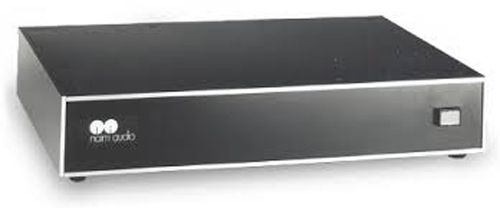
A&R Cambridge A60 (1976)
The year it was founded, Amplification & Recording Cambridge (now Arcam) launched a slimline integrated amplifier that went on to become the go-to middle-market amplifier in the 80s and the natural upgrade from your budget champions such as the NAD 3020 and Mission Cyrus One (both below).
Not only did it deliver a sound that was punchy, rhythmic and dynamically expressive, but it also was well equipped with a handful of inputs (one of which was fed by a capable moving-magnet phono stage) and treble, bass and balance controls, as well as being lovely to look at. All in all, the A60 was a runaway success througout its 12-year shelf life (it was replaced by the Delta 60 in 1988) and certainly laid the foundations on which the British firm built its success.
Mark Levinson ML-2 (1977)
OK so, admittedly, the ML-2 wasn’t Mark Levinson’s first product, following a few preamplifier designs, but it was its debut power amplifier, produced from 1977 to 1986 – and a bloody good one at that. Based on the designs of the company’s first designer John Curl and finished by succeeding engineer Tom Colangelo (who was behind subsequent ML designs until Mark Levinson himself left the company to found Cello and took Colangelo with him), it was a 25-watt (into eight ohms) Class A monoblock design that could double its output as impedance halved (50 watts into four ohms, 100 watts into two), contributing to its nice fit with Quad’s electrostatics at the time. Because of that Class A operation and rate, however, this physical beast of an amplifier (30kg heavy with its giant heat sinks and side carry handles) drew 400 watts of power from the AC (!) and could heat a small living room.
Still, this natural partner to the ML-1 (one of those aforementioned preamps) blew the competition away and made up an equally legendary, tri-amplified reference system called the HQD system, featuring six ML-2s powering four Quad electrostatic midranges, two Hartley woofers and two Decca ribbon tweeters, with two LNC-2 electronic crossovers also present.
NAD 3020 (1978)
We don’t think anyone could really argue the NAD (New Acoustic Dimension) brand was established on the success of the original 3020 amplifier. It was born out of the desire by a group (led by American Marty Borish, who had just resigned as President and CEO of Acoustic Research) to offer hi-fi enthusiasts unprecedented value-for-money performance, and the Class A/B design was the brainchild of the founding group’s Björn Erik Edvardsen (known as BEE and a former Dolby Labs engineer).
This unassuming budget amplifier didn’t measure particularly well, nor would its 20 wat-per-channel output have turned many heads, and yet it could drive speakers better than most of its price-matching rivals at the time, setting the standard for sound quality in a category where most still put specification and features first. It had a balance that was smooth and full-bodied, which worked well with the less-than-refined budget kit of the time, delivering a good, coherent sound. No wonder it went on to become the best-selling integrated amplifier ever.
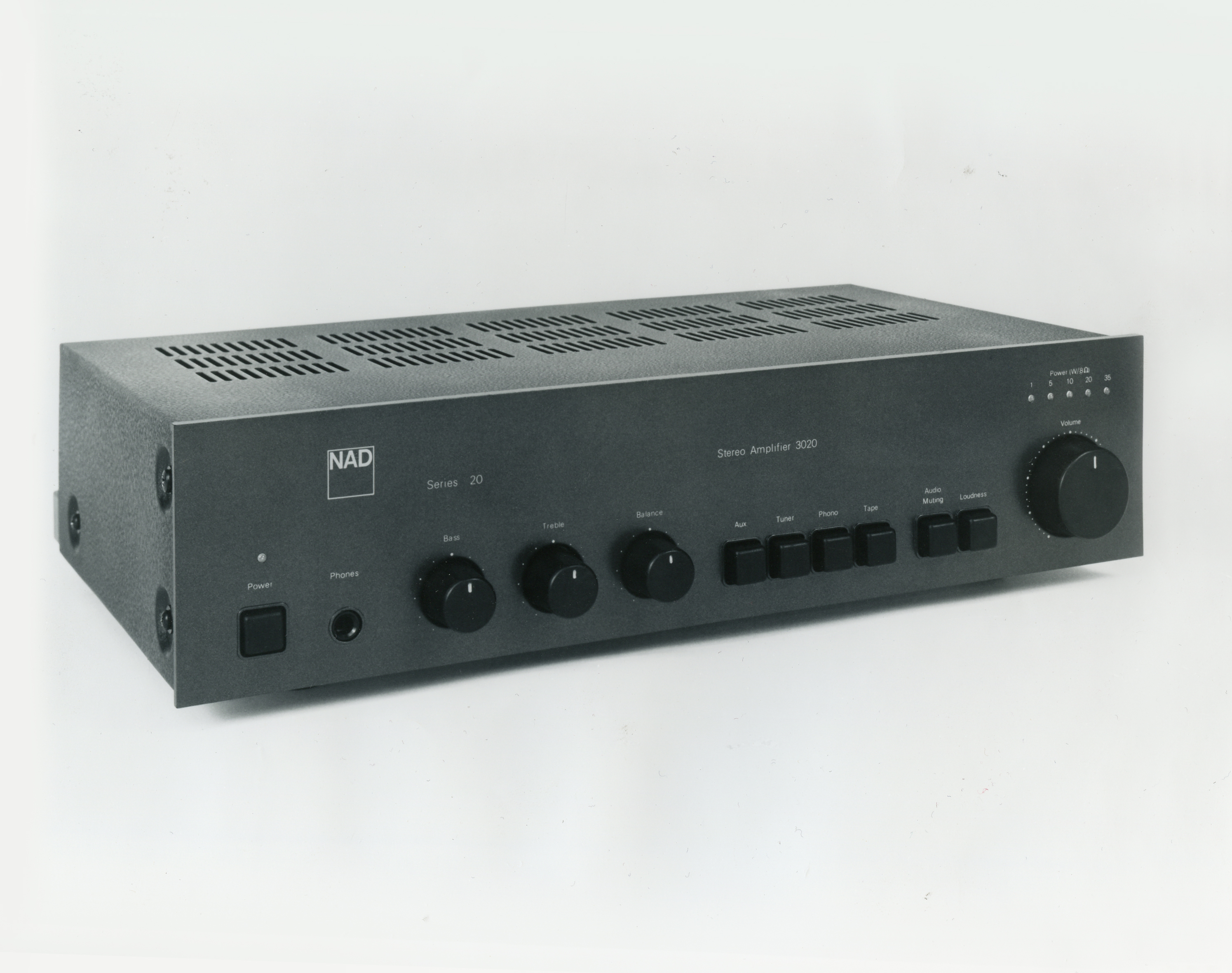
Krell KSA-100 (1980)
Just before the 80s rolled in, husband and wife duo Dan and Rondi D'Agostino launched Krell out of their garage. It was named after the scientifically advanced alien civilization from the classic 50s sci-fi film Forbidden Planet (one of Dan’s favourites from childhood) and made its public debut at CES 1980 with just one product – the KSA-100 power amplifier. Amplifiers are often referred to as powerhouses, and at that time the Krell would’ve epitomised that label – thanks to a deliberately excessive power supply and output stage, the KSA-100 could drive any load, regardless of impedance, delivering 100 watts of Class A power into eight ohms… or 1600 watts into one ohm!
That was a great deal more than the high-end alternatives from the likes of Mark Levinson and Threshold at the time, and pretty groundbreaking. Not only was the arrival of such a capable power amplifier like the KSA-100 (and subsequent models like the legendary KSA50) great news for audiophiles, but it was also great news for manufacturers of high-end loudspeakers. Designers could concentrate on creating speakers safe in the knowledge they didn’t have to worry as much about the load they were putting on amps.
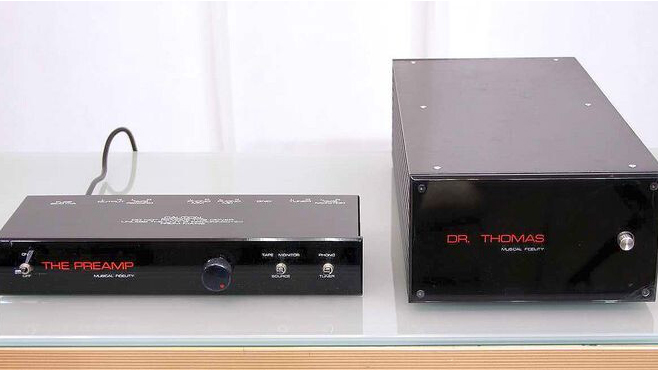
Musical Fidelity The Preamp/Dr. Thomas Power Amplifier (1982)
Many (including us) consider 1985’s A1 one of the most iconic amplifiers of all time, so it’s pretty impressive that it came just three years and three products after Musical Fidelity was founded. The company's first two products were a matching pair, with the bare-bones-named preamplifier arriving first, reportedly created out of the dissatisfaction that founder Antony Michaelson had with the TVP-1 preamp made under his previous Michaelson & Austin company. It quickly racked up rave reviews (and not just for its illuminated naming on the fascia), and then came the chunky power amplification partner.
Evidently, its designer, Dr. Martin Vincent Thomas, didn't like the idea of falling in line to make The Power Amp, choosing to take matters into his own hands when it came to establishing a moniker for Musical Fidelity's first power amp. The 120 watts-per-channel Dr. Thomas was a great visual and sonic match, surprisingly powerful too.
Audiolab 8000A (1983)
The product that started it all for Audiolab, both literally and figuratively. Audiolab was formed in 1983 by Philip Swift and Derek Scotland, and its debut 8000A integrated quickly earned worldwide acclaim for its standout build quality, box-ticking featureset (tone controls: tick, headphone output: tick, phono stage: tick, separate record selector so that you could listen to one source while taping another: tick) and an insightful performance that could drive most price-compatible speakers with ease.
Knocking the A&R Cambridge A60 off its perch, it was responsible for an overall raising of standards so far as British amplifier build quality and design were concerned, and set the standard for midrange amps for years to come.
Cyrus One (1984)
Cyrus Audio was founded as the electronics offshoot of Mission Loudspeakers (hence the brand’s early name ‘Mission Cyrus’) and its debut products in late 1984 were two half-width integrated amplifiers – the Mission Cyrus One and, with greater power output and a more sophisticated phono stage, the Mission Cyrus Two.
Despite its modest price of £130 (approx £600 / $700 / AU$1000 in today’s money), the One was very much a product for audiophiles – no balance or tone controls, but plenty of analogue inputs and a sound quality that outperformed pricier rivals at the time. It was highly musical and had a particularly impressive knack for detail retrieval, surfacing low-level information that other amplifiers, to quote our review, "repressed or simply rendered messy". It’s little wonder, then, how these two debuts launched Cyrus into electronics stardom in the mid-80s.
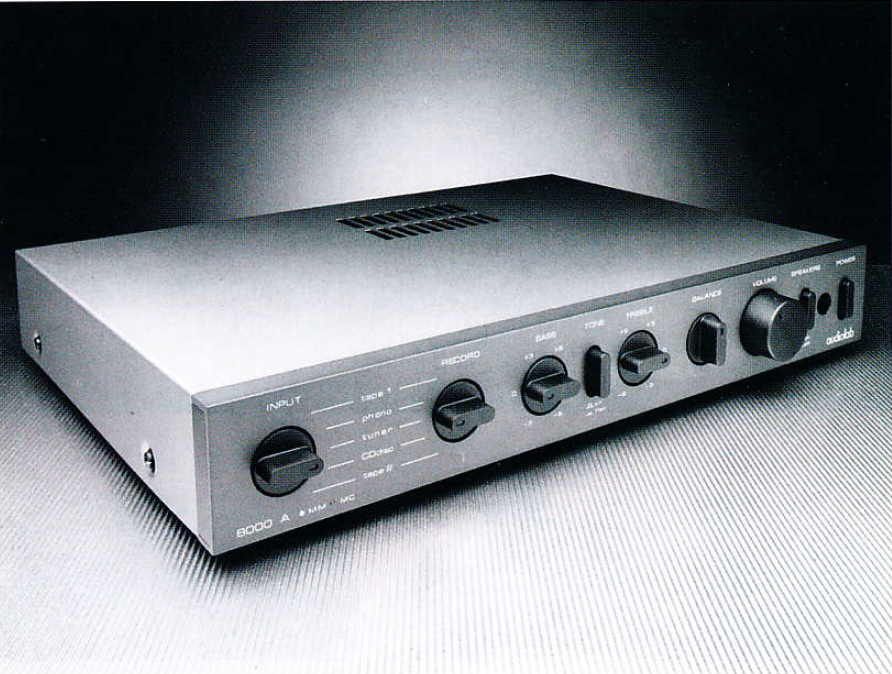
- See our longer list of 9 debut stereo amplifiers from iconic hi-fi brands
9 debut speakers
Wharfedale Bronze 2 (1932)
Wharfedale’s first speaker was built in the cellar of music and audio enthusiast Gilbert Briggs' home in a West Yorkshire town called Ilkley in the valley of Wharfe (known as ‘Wharfedale’, hence the company name). The Bronze was purely a drive unit – in those days, such things were considered cutting edge technology and radio enthusiasts would assemble their own cabinets – but a year later it was housed in a wooden cabinet for those who wanted an ‘extension’ speaker, and shortly after came the Nubian cabinet speaker in 1934. According to a history by Audio Affair, his wife, Doris Edna Briggs, would wind and solder voice-coils for these fledgling Wharfedale loudspeakers, two of which won first (the Bronze) and second place in the local Bradford Radio Society’s annual competition in 1933. Now with a factory in Bradford and production ramping up to 9000 units per year, Wharfedale Wireless Works (as it was called then) was off to a flier.
A decade later, having produced 40,000 transformers for telecomms company Marconi during World War II, the company marked the first of many milestones: the invention of the first two-way loudspeaker. In 1945, the company combined a 30cm bass driver with a 25cm full-range ‘treble’ unit, using a crossover at 1kHz.
Acoustic Research AR-1 (1956)
Acoustic Research was founded in 1952 by inventor Edgar Villchur and his student Henry Kloss. Based on the acoustic suspension principle patented by Villchur in 1956, its first model, the AR-1, sold for $185 (over £1000 in today’s money).
The AR-1's woofer used entrapped air in the speaker’s sealed enclosure to provide a spring for the diaphragm, enabling it to move back and forth - doing the same job as the more conventional mechanical spring.
That was followed shortly afterwards by the AR-2, but in 1958, the AR-3 became Acoustic Research's landmark speaker, borrowing the AR-1's acoustic suspension technology, but bringing onboard a newly designed midrange driver and tweeter.
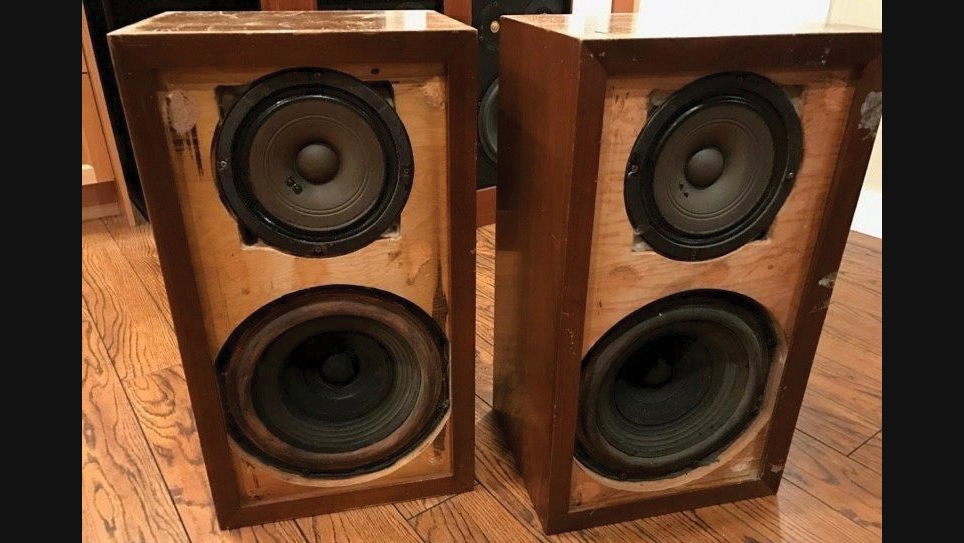
Quad ESL-57 (1957)
Despite what this list may have you believe, revolutionary speaker technologies don’t come along often, which makes the exploits of Quad (an acronym for 'Quality Unit Amplifier Domestic') founder Peter Walker all the more significant. In 1956, Walker introduced a speaker that used electrostatic technology instead of conventional drivers for the first time ever, waving goodbye to traditional driver cones and cumbersome cabinets and consequently the obstacles they present (such as cabinet colouration). In their place was a thinly stretched, electrically charged diaphragm between two metal grilles receiving the audio signal from the amplifier As music played, the electrical charge on the grids changed polarity and through the forces of attraction and repulsion made the membrane move, so creating sound.
That speaker would go on to be called the ESL-57 and marked a huge step up over the moving coil designs of that time (particularly in the rendition of vocals), so much so that garnered worldwide popularity and significance, remaining in production for nearly 30 years and spawning several brand-defining ‘ESL’ electrostatic siblings, the latest of which can still be seen on shop (and show) floors – and many ‘Best Of’ hi-fi lists like this one – today.
KEF K1 Slimline (1961)
After five years working for Gilbert Briggs at Wharfedale (before which he was a BBC trained engineer), Raymond Cooke decided to start his own operations under the KEF (Kent Engineering and Foundry) name. He wanted to move away from the conventional drive unit materials that Wharfedale was using at the time (paper) to experiment with the various plastics that were just becoming available. The founder also had another desire that went against the grain back then: to achieve outstanding sound quality from a slim, living room-friendly enclosure.
While KEF launched the ‘conventionally’ sized, three-way K1 monitors in ready-built and also kit form (a popular concept in the Sixties), with their 35cm-deep, braced and heavily damped enclosures standing tall at just over a metre high, it also launched slimmer versions alongside them, with cabinets just 12cm deep. They featured the same innovative drivers with synthetic material cones – the B1814 woofer with its flat rectangular diaphragm of aluminium skinned polystyrene, the M64 elliptical midrange unit with a similar diaphragm construction, and the T15 tweeter with its hemispherical Melinex diaphragm.
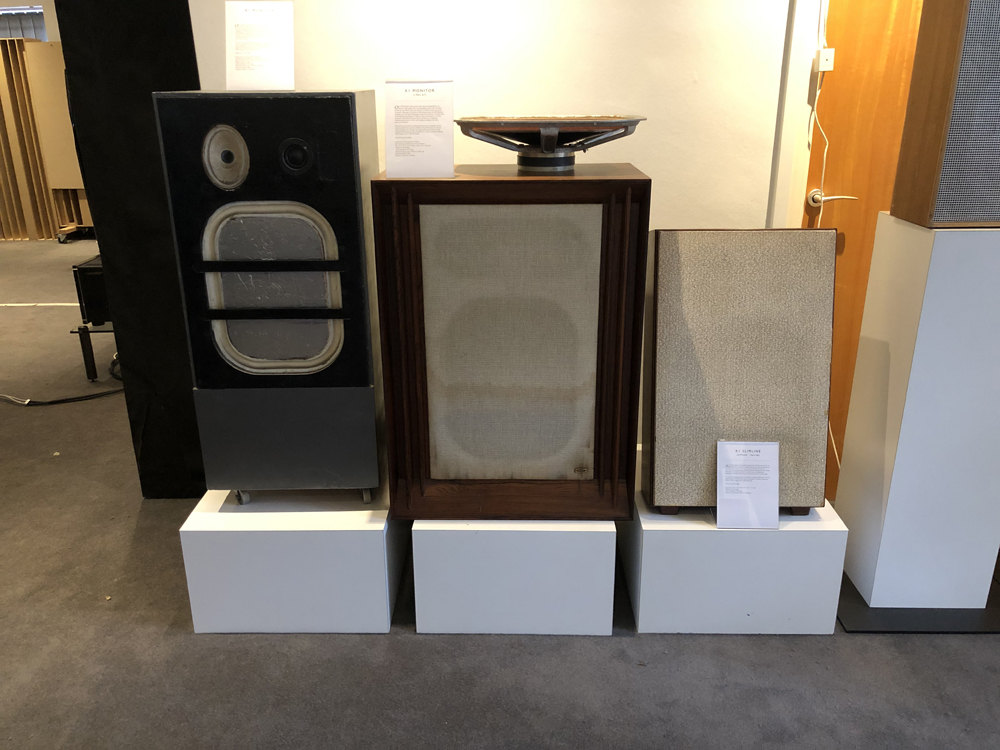
B&W P1 (1966)
In the mid-60s, John Bowers started hand-assembling speaker systems in the back of the radio and TV shop he ran with Roy Wilkins in Worthing (the two had met serving in the Royal Corps of Signals during World War II. When only a year later a Miss Knight, a wealthy Worthing resident and former opera singer who had been impressed with Bowers’ speaker advice, left him £10,000 in her will (nearly a quarter of a million in today’s money), he was able to instil his skills into a business he called B&W Electronics Ltd – and the P1 were released.
The cabinet and filter were B&W's own, but the drivers came from EMI and Celestion – this was in the decade before the company started using the bright-yellow Kevlar woven composite. The profits from the highly successful, highly acclaimed P1 allowed Bowers to purchase a Radiometer Oscillator and Pen Recorder, meaning that every subsequent speaker from the P2 that soon followed could have a calibration certificate. Just as importantly, it put Bowers & Wilkins on audio reviewers’ maps as a British brand to follow.
Spendor BC1 (late ’60s)
Spendor was founded by BBC engineer Spencer and his wife Dorothy (hence its name) Hughes and introduced itself to the world with the BC1, a brainchild of Spencer and co-designer Dudley Harwood (later of Harbeth fame), both of whom had designed drivers as part of the British Broadcasting Corporation’s R&D team.
Bextrene was the material of choice for the speaker diaphragms in Spendor’s first pair of speakers (hence the ‘BC’ (Bextrene cone) name), having featured in the BBC’s LS5/5 studio monitors for which Hughes had been the laboratory technician. In fact, the three-way speakers utilised the only commercial 80-inch Bextrene mid-bass driver at that time, paired with a Celestion HF 1300 tweeter (ranging between 3kHz and 13kHz) and a Coles 4001 G supertweeter (above 13kHz). They were fed by a nine-element crossover comprised of film capacitors for frequency and temperature stability, and radio metal cored chokes that allowed for high transients and low resonances.
The BC1 hit the market in the late ‘60s and found their way into broadcast and recording studios before eventually being available to buy for consumers. Some 600 pairs were supposedly in operation at the BBC at one time!
Wilson Audio WAMM (1982)
Wilson Audio Founder Dave Wilson had a pretty ambitious dream to design speakers that could be configured to the room they sat in. After much experimentation, he was adamant that there was a direct correlation between the acoustic center of the driver and knowing where and when the sound from each of the drivers arrived at his listening position. Align the drivers correctly to the listening position and the result is far more integrated and thus lifelike sound. The first (of many) Wilson Audio speakers to address that was the WAMM (Wilson Audio Modular Monitor).
Each channel comprised two towers: one sub-bass module with woofers operating below 55Hz, and one with twin mid-bass drivers and an electrostatic supertweeter flanked by twin midrange/tweeter modules. The drivers were precisely placed to reduce timing differenced between them to microsends. Central to the design was the electronic crossover and equalizer.
Perhaps unsurprisingly, the WAMM was the most expensive speaker you could buy at that time at $28,000. The model evolved through six versions from 1982 to 1993, and has since been revived, with the Master Chronosonic and Master Subsonic speakers still current in the company's catalogue.
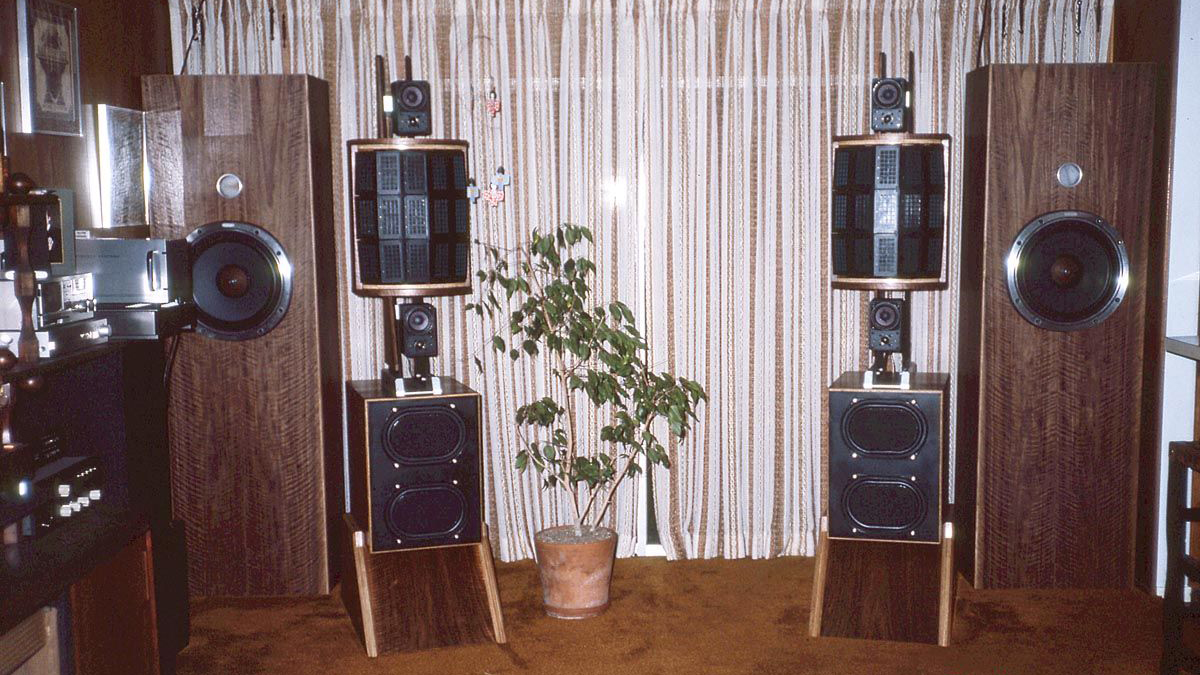
Acoustic Energy AE1 (1987)
With the introduction of the AE1 Loudspeaker in 1987, Acoustic Energy Ltd was officially born. The concept was to create a compact studio monitor (it measured only 30cm tall and 18cm wide – barely larger than a shoebox) that could handle the high volumes and dynamics of larger speakers. And boy was that concept delivered.
Acoustic Energy lined its cabinet with a concrete/plaster compound to eliminate as much resonance as possible. It developed a new mid/bass driver made of metal (rare at that time), featuring a 10cm cone of spun aluminium which was thicker at the centre than the edges and anodised to create a ‘ceramic sandwich’. And it also used an oversized magnet assembly that allowed the AE1 to accept 200W of power.
Indeed, while on the smaller side for speakers of their time, the premium bookshelf designs certainly could let rip, capable of delivering impressive punch and dynamic reach. Their huge soundstage, accuracy and speed of delivery were superb, too, as were their staggering levels of detail.
The AE1 was refined over several revisions (including an active pair) until 2016, when its SEAS tweeter went out of production, making it one of the longest-running speakers, as well as one of the most influential.
PMC BB5-A (1991)
After a stint as the manager of BBC's Maida Vale studios, Peter Thomas and former BBC engineer Adrian Loader designed the first PMC (Professional Monitor Company) speakers, the BB5-A (which BBC Radio would go on to choose for their new music studio at Maida Vale). They introduced the company’s hallmark Advanced Transmission Line technology, in which drivers were used to improve bass output.
In an interview with What Hi-Fi?, Thomas recalled being introduced to IMF transmission lines by Tom Barron (now PMC’s business development manager) at the Audio Olympia show in London. “You’ve got to hear these, there’s something very special about their sound,” Barron told him. That was, Thomas said, a “lightbulb moment”.
“Whereas the majority of speaker designers used ported or sealed cabinets, we found that a transmission line system for bass loading, if refined, gave a performance that significantly exceeded conventional bass loading principles.”
Thomas says the BB5 could be his favourite PMC speaker: “ that was the first speaker we produced commercially, and it set us on the road of what was to become PMC. Without that, we wouldn’t be where we are today.”
- See our longer list of 22 debut speakers from iconic speaker brands
- These are the best CD players we've tested that are still available






